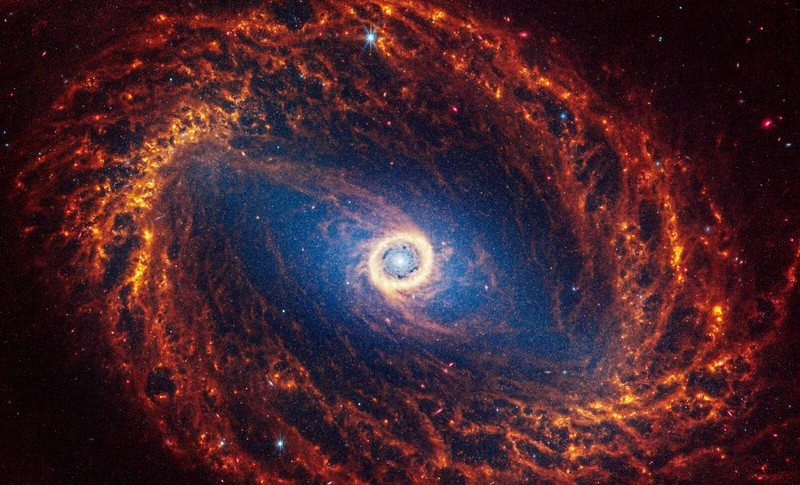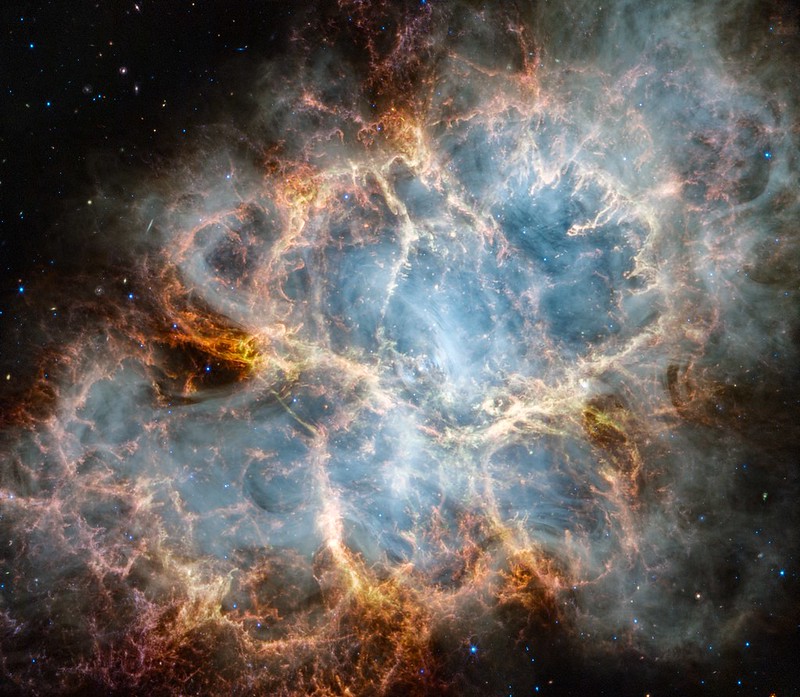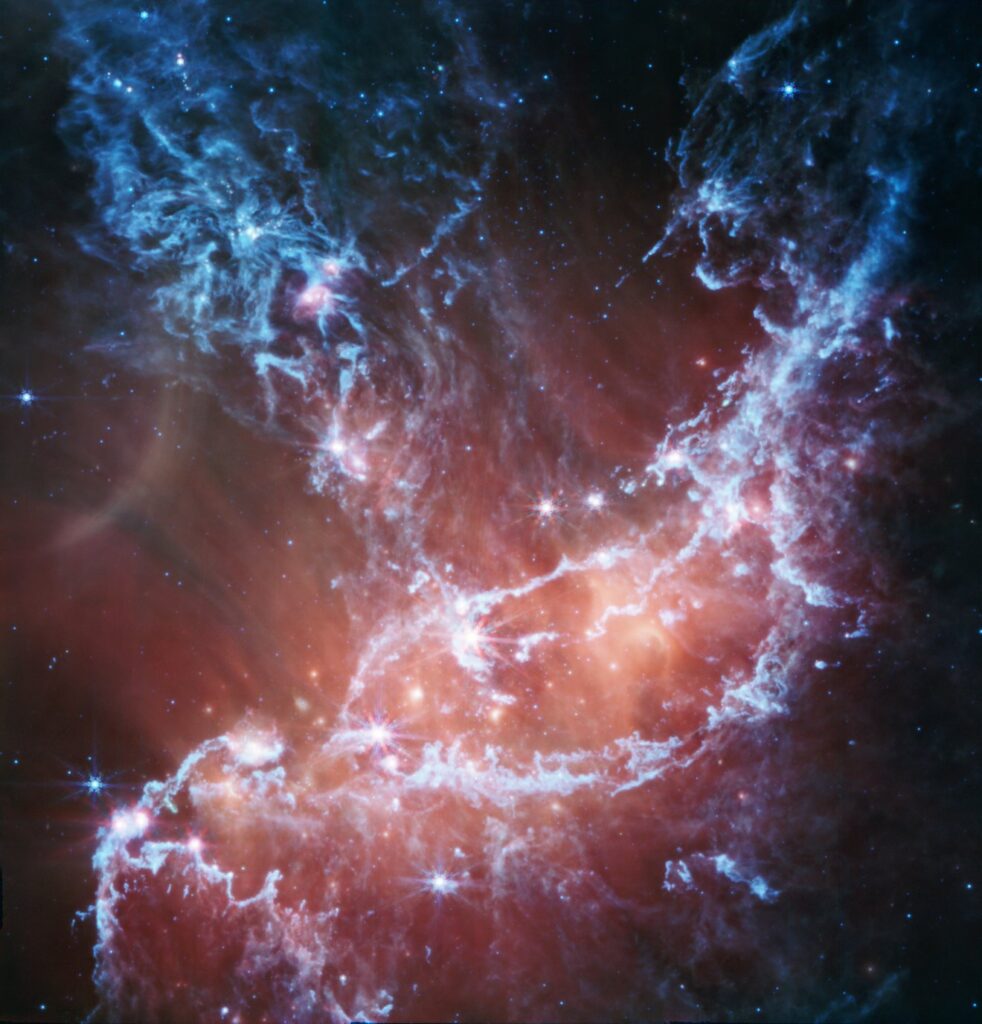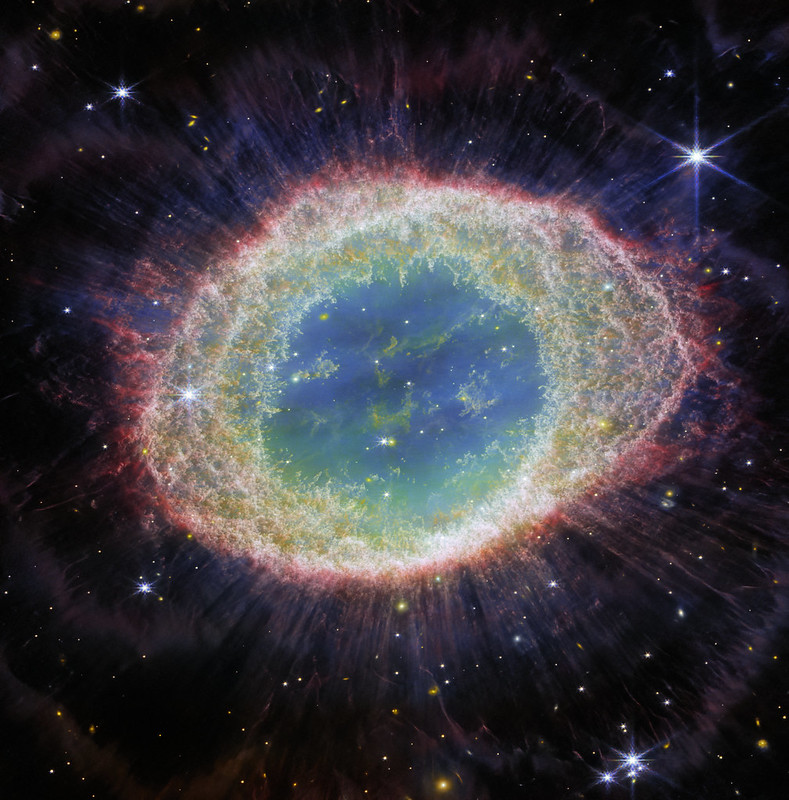Human beings are not the only ones able to create art: the universe paints the most stunning works of art on the canvas of the black sky. NASA has built a web index with the latest shots from the James Webb Space Telescope.
All their images go through a scientific peer review before being published.
We now invite you to an experiential visual journey. Imagine you find yourself in an art gallery somewhere in a distant galaxy and discover the seven images below.
Take a deep breath and close your eyes for a moment before looking at each photo.
What feelings do they evoke in you? What is the first word that pops up in your mind associated with each image?
Webb Telescope and the beauty of space

The image above of the supernova remnant Cassiopeia A resembles a disk of electric light with red clouds, glowing white streaks, red and orange flames, and an area near the center of the remnant resembling a somewhat circular region of green lightning. According to Webb, this work has helped explain an unusual structure in the debris from the destroyed star called the “Green Monster”, first discovered in Webb data in April 2023.

This next image from Webb shows the barred spiral galaxy known as NGC 1512, which is 30 million light-years away in the constellation Horologium. You can see how it’s anchored by its circular central region, which shows a bright white point at the center with blue and yellow circles around it. Looking outside the core you can see a large bar structure (part of why this is a barred spiral galaxy) filled with a haze of blue stars to form a rough parallelogram that fills roughly a quarter of the area.

The Crab Nebula is a supernova remnant and pulsar wind nebula. It is located in the star constellation of Taurus 6,500 miles from Earth. The nebula got its name from an 1842 drawing, where William Parsons, 3rd Earl of Rosse, painted what he saw in a telescope – and the result reassembled a crab.

NGC 346 (MIRI) is the brightest and largest star-forming region in the Small Magellanic Cloud (SMC). The SMC is a satellite galaxy to Milky Way, and you can actually spot it with the naked eye. The red regions consist of heated dust illuminated by some of the heaviest stars in the central region. The area also has baby stars still embedded in their cocoons.

This next image is of Orion mosaic from the homonymous nebula located south of Orion’s Belt. The region is a treasure trove for astronomers studying the birth of and early evolution of stars. These include: outflows and planet-forming disks around stars, embedded protostars, brown dwarfs, free-floating planetary mass objects, and photodissociation regions.

From birth to death – our cosmic gallery collection is sealed with a ring nebula containing a dying star at its center. Astronomers believe it has a companion star in the outskirts of the nebula judging by the shape of the outer layers expelled by the dying star. This image proves that everything contains beauty, even death.

This final image is the result of teamwork between both Webb and the Chandra X-ray Observatory. Through combined efforts, they were able to create a composite image of the Tarantula Nebula.
According to Webb, the Tarantula Nebula stands out among most other nebulas in our galaxy because it has a chemical composition more similar to the conditions of our galaxy several billion years ago. This fascinating cosmic time capsule may serve as the perfect glimpse into how stars took form long ago.
Reflecting on the Cosmos
Viewing these images can make it easy for someone to view how stunning the universe is. With an almost endless variety of stunning beauty, it wouldn’t be too far off to consider it as a sort of unwinding mural that conveys depth that extends beyond our own understanding. At the same time, however, we also exist within this piece and perhaps that means we create our understanding through our continued pursuit of exploring and being a part of this incredible work.
